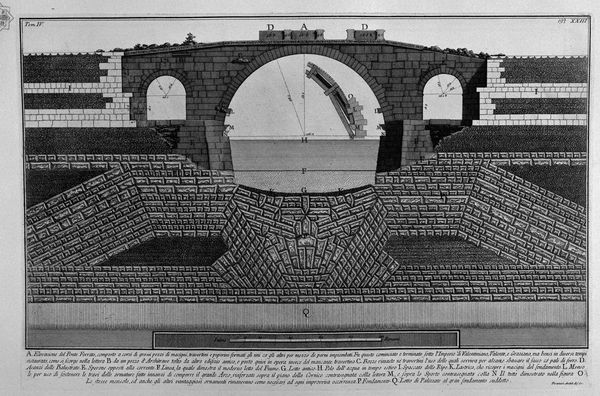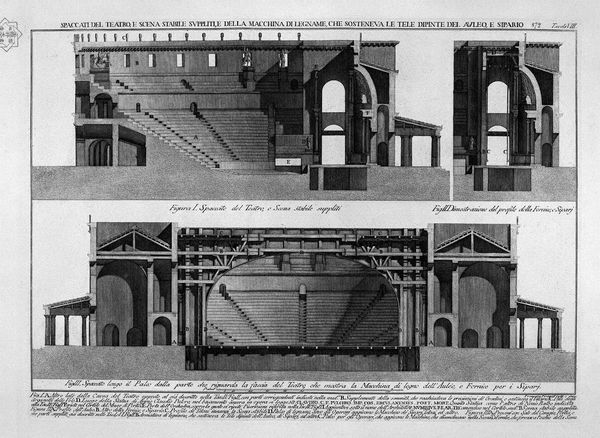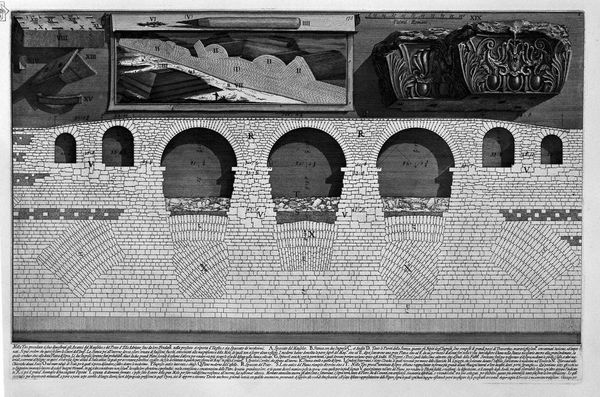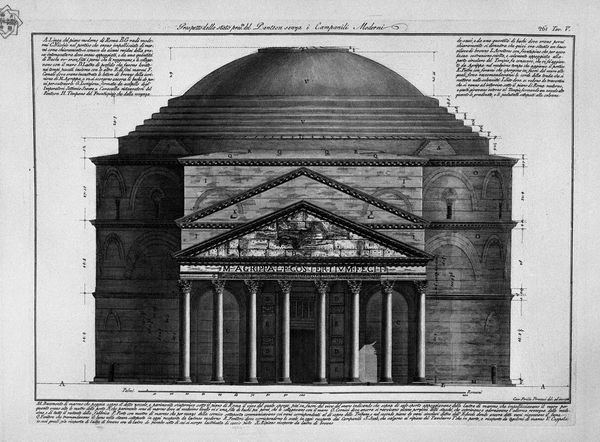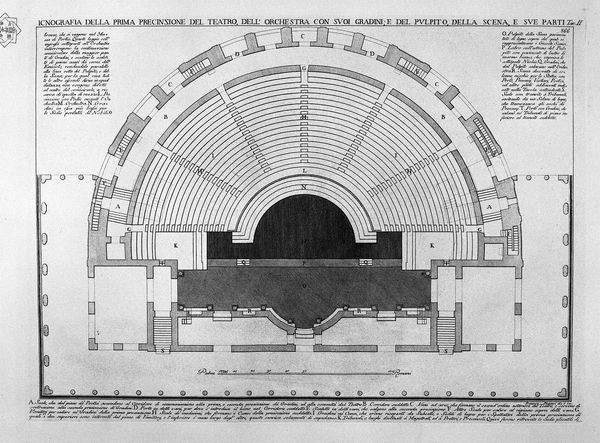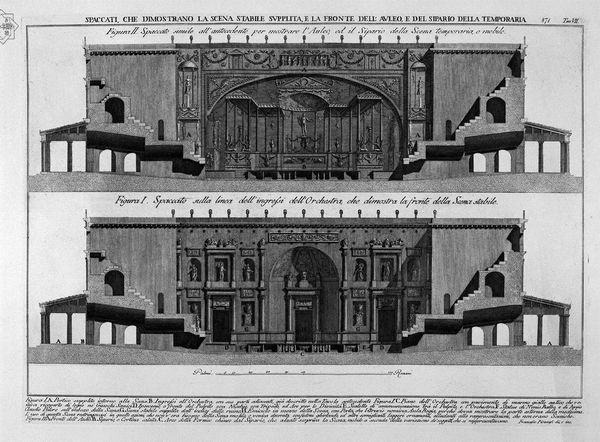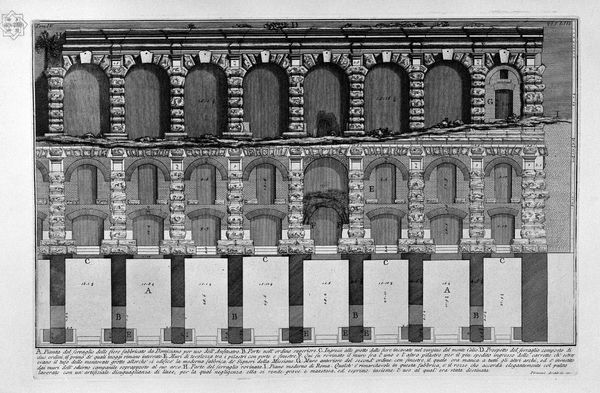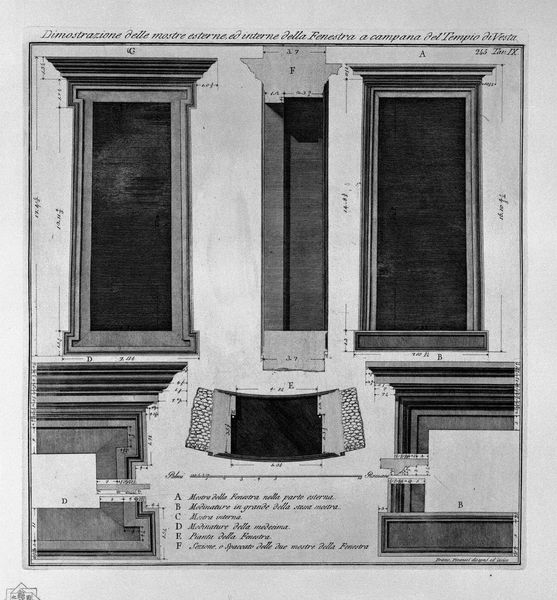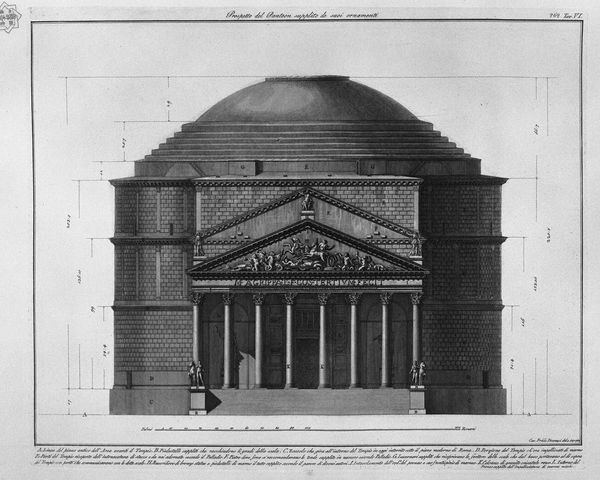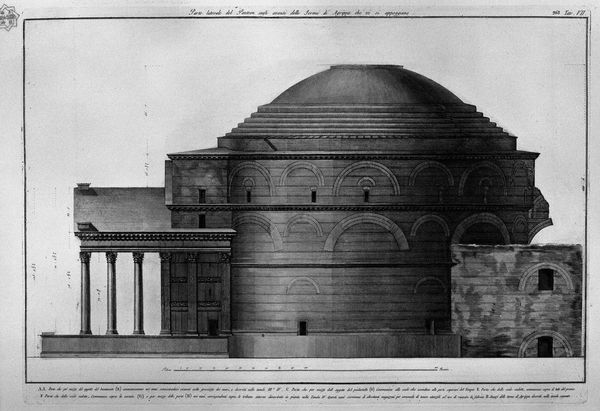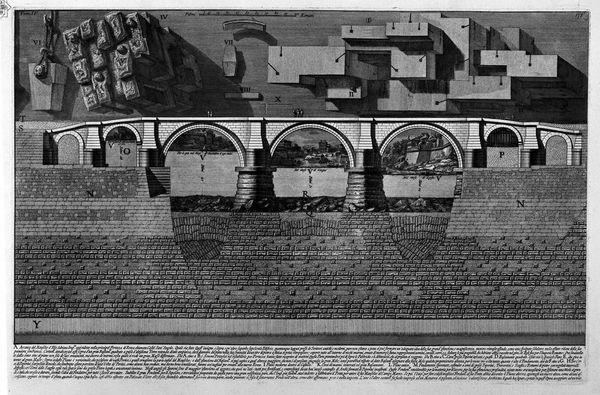
The Roman antiquities, t. 4, Plate XIX. Plan, elevation and details of construction of the Bridge of Four Heads.
0:00
0:00
drawing, etching, architecture
#
drawing
#
etching
#
architectural form
#
form
#
romanesque
#
geometric
#
architecture
#
line
#
architecture
Copyright: Public domain
Editor: This is "The Roman Antiquities, t. 4, Plate XIX. Plan, elevation and details of construction of the Bridge of Four Heads" by Giovanni Battista Piranesi. It's a detailed architectural drawing and etching, seemingly focusing on the structural elements of the bridge. The intense detail almost feels overwhelming. What do you see in this piece that I might be missing? Curator: The density *is* striking, isn’t it? But for me, it's about more than just architectural documentation. Piranesi isn’t just showing us *how* the bridge is built, but inviting us to consider its presence as a statement of Roman power and engineering prowess. Think about who this was made for – elite patrons participating in the Grand Tour. This bridge isn't just stone; it’s a symbol loaded with the weight of imperial ambition, designed to impress and awe. Do you see the deliberate use of scale, making it seem both monumental and somewhat fantastical? Editor: Yes, I can see that now. So, you’re saying it's less about pure architecture and more about using architecture to project a certain image or ideology? Curator: Exactly! And that ideology is deeply embedded in notions of Roman superiority and cultural dominance. Consider how this imagery might have played a role in reinforcing class structures through art. How does understanding the role of architectural drawings in Neoclassical Rome shape your reading of it? Editor: That’s a great point! I was focusing on the visual details, but I now appreciate how the work carries these complicated messages about power, culture, and class. Curator: It’s precisely in that tension between aesthetic beauty and historical baggage that the artwork becomes truly compelling.
Comments
No comments
Be the first to comment and join the conversation on the ultimate creative platform.
